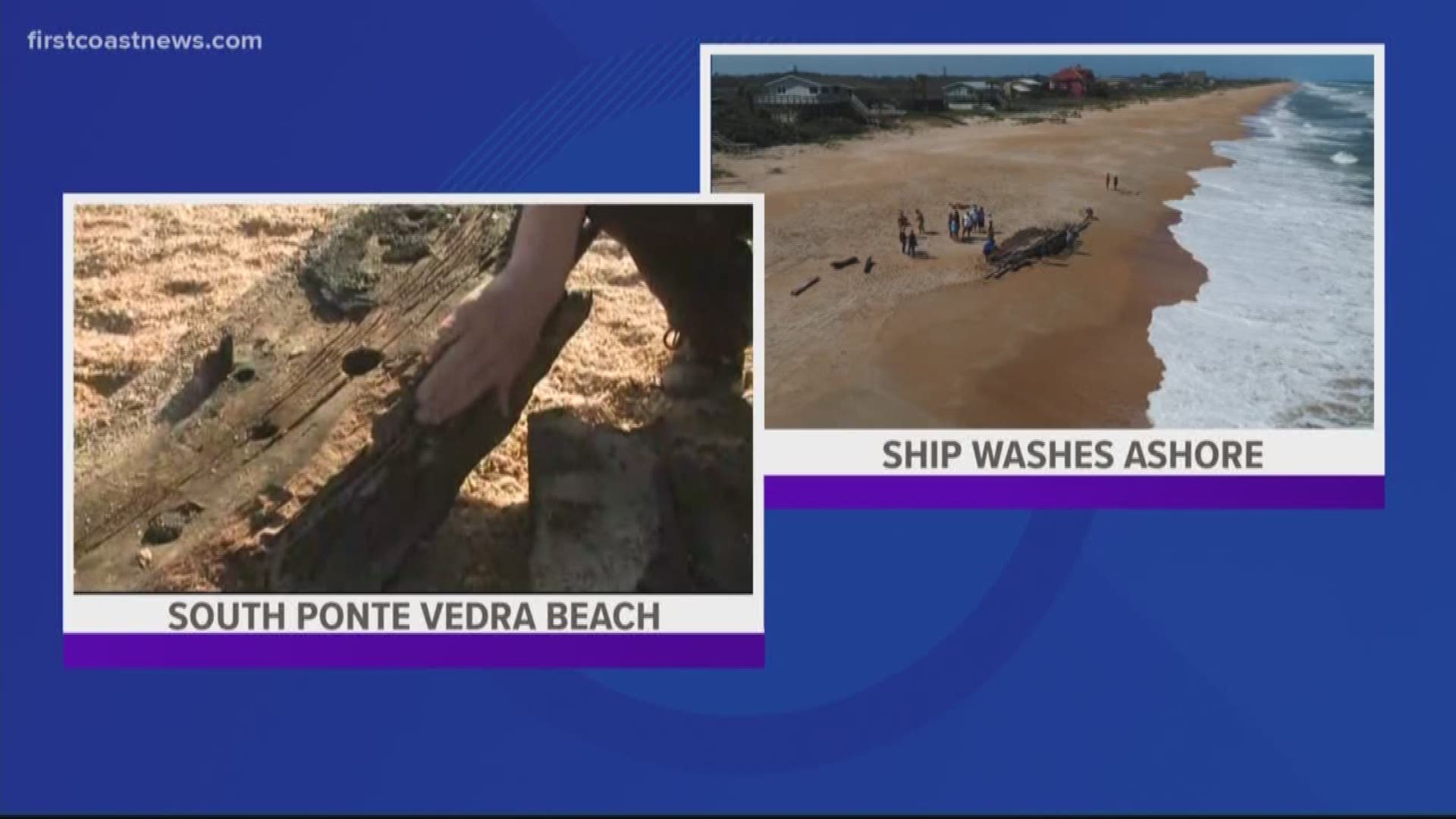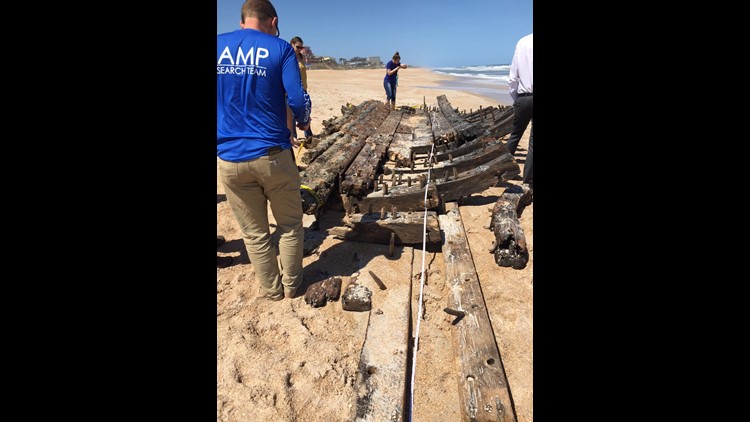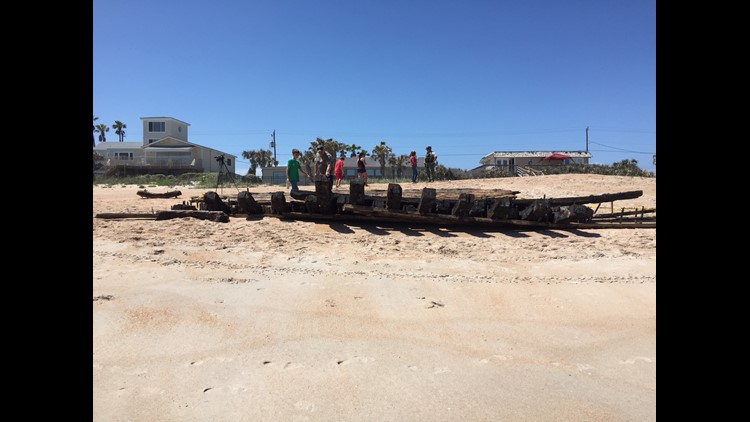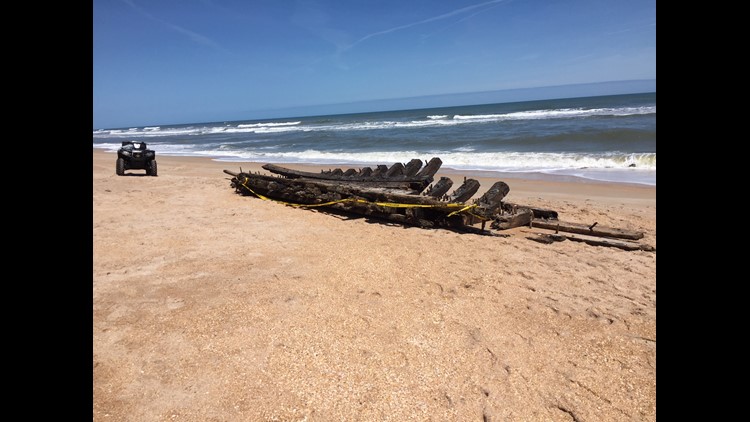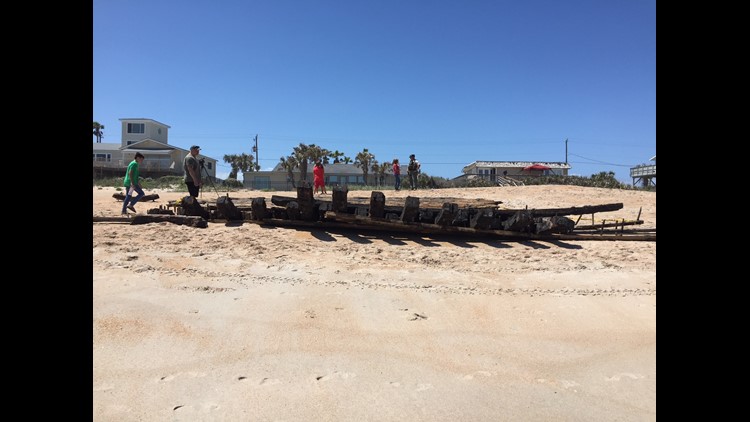SOUTH PONTE VEDRA BEACH — Overnight Tuesday, a surging ocean pushed ashore a remarkably well-preserved, 48-foot section of the wooden hull of a sailing ship that could date back as far as the 1800s or even the 1700s.
And there’s a real chance that high tide could pull the wreck — which is the property of the state — back under the water again for who knows how long.
There’s little legally that can be done about that, said researchers from the St. Augustine Lighthouse and Maritime Museum, who came to the wreck Wednesday afternoon to document it, while it was still there, with photos, video, notes and measuring tape.
With those photos, they can create a 3-D model of what the hull looked like, said Chuck Meide, LAMP’s director of maritime research.
“This is amazing,” he said. “It’s a section from a big sailing ship, I’ll tell you that.”
Shortly after they arrived, Meide and his colleague, LAMP’s maritime historian Brendan Burke, stood up from examining the wreck and exchanged smiles.
“This is what we were born for,” Burke said.
The wooden remains were apparently first sighted before 8 a.m. by Julia Turner, a Vilano Beach resident who spent Tuesday night at a home her parents, visiting from Georgia, had rented just south of the Guana River Preserve’s south parking lot. From the deck, she thought it was a piece of fence or dune walkover that had washed ashore, but her 8-year-old son Patrick said he knew right away it was what it was.
“When I looked out the window, it was immediately a ship,” he said.
19th century ship washes ashore in Ponte Vedra
Burke said the hull of ship, which he estimated to date from the late 1700s to the 1800s, was originally sheathed in copper, as evidenced by some copper tack heads that were still visible. Wooden pegs or nails, called trunnels, which were used to secure the hull to the wooden ribs, were also visible, as are Roman numerals carved on the ribs, he said.
“It’s really amazing to see somebody’s writing that been buried in the ocean for well more than a century,” Burke said.
Maritime museum officials believe the wreck may have been buried in sand offshore, which would account for it being so well preserved, then washed onto the beach due to recent storm wave action.
Patrick Turner said he was playing on the beach Tuesday, and there was nothing there then. “Just sand, water and shells. And sticks,” he said.
Meide said the ship may not have wrecked anywhere nearby; some wreckage can float hundreds of miles before coming ashore.
St. Augustine Lighthouse and Maritime Museum’s staff have logged and investigated dozens of shipwrecks in St. Johns and Duval counties since its founding decades ago, including remains of hulls exposed along beachfronts by passing storms.
This wreck rested below the high tide line, and even several hours before high tide Wednesday afternoon waves washed up against it. Three pieces of wood from the old boat were scattered several yards away, farther up the beach.
Marc Anthony, a treasure hunter and salvager who runs Spanish Main Antiques in St. Augustine, was dismayed as he watched the ocean threaten the ship again. He’d been there most of the day and said that already waves had broken off part of the main section of the wreck.
“That’s what I’m worried about, right there,” he said as a wave rushed up the sand, covering his shoes and bouncing off the old hull.
He vowed to stay with the wreck as the water rose. “If people care so much about history, let’s do what we can to preserve it,” he said.
Anthony said he’d never seen an old wreck this large and well-preserved, pushed up the beach for anyone to see it.
“To me,” he said, “this is bucket list: Check.”

